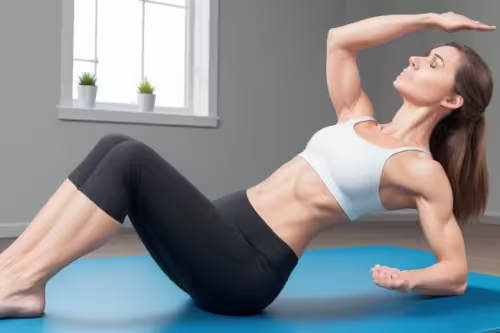10 Effective Pelvic Floor Exercises to Strengthen Your Core and Improve Wellness

Pelvic floor exercises are often overlooked but play a crucial role in maintaining core strength, bladder control, and overall well-being. Whether you’re recovering from childbirth, dealing with incontinence, or just looking to improve your core stability, these exercises can benefit everyone. In this article, we’ll explore 10 effective pelvic floor exercises that can transform your health.
What is the Pelvic Floor?
The pelvic floor is a group of muscles that support the bladder, bowel, and uterus (in women). These muscles form a sling-like structure that extends from the pubic bone to the tailbone. When functioning properly, the pelvic floor muscles help control bladder and bowel movements, support the spine, and contribute to core strength.
Benefits of Pelvic Floor Exercises

Before diving into the exercises, let’s look at why pelvic floor exercises are important for both men and women:
- Improved bladder and bowel control: Strengthening the pelvic floor muscles can reduce the risk of urinary incontinence.
- Enhanced sexual function: A strong pelvic floor can lead to improved sexual satisfaction by increasing muscle tone in the pelvic region.
- Core stability: These exercises can enhance core stability, leading to better posture and reduced lower back pain.
- Faster recovery post-childbirth: For women, pelvic floor exercises are essential for recovery after childbirth, helping the muscles regain strength.
1. Kegel Exercises: The Classic Pelvic Floor Strengthener
How to Do It:
Kegel exercises are the most well-known pelvic floor exercises. They target the muscles that stop urine flow midstream. Here’s how to do them:
- Sit or lie down comfortably.
- Contract the muscles you’d use to stop urinating.
- Hold the contraction for 3-5 seconds.
- Relax for 5 seconds.
- Repeat 10 times, gradually increasing the duration as your strength improves.
Tip: Make sure you’re not tightening your abdomen or buttocks during the exercise. Focus solely on the pelvic floor muscles.
2. Bridge Pose (Glute Bridge)
The bridge pose not only strengthens the glutes but also engages the pelvic floor muscles.
How to Do It:
- Lie on your back with your knees bent and feet flat on the floor, hip-width apart.
- Inhale and push through your heels to lift your hips off the ground.
- Engage your pelvic floor as you lift, keeping your shoulders on the mat.
- Hold the pose for 5-10 seconds, then lower your hips back to the floor.
- Repeat 10-15 times.
Why It Works: This exercise works the pelvic floor and core muscles simultaneously, offering double benefits for core stability and bladder control.
3. Squats for Pelvic Floor Health
Squats are not only great for your legs and glutes but also for strengthening the pelvic floor.
How to Do It:
- Stand with your feet hip-width apart.
- Lower yourself into a squat position by pushing your hips back as if you’re about to sit in a chair.
- As you lower down, engage your pelvic floor muscles.
- Hold for 2 seconds, then push through your heels to stand up.
- Repeat 10-15 times.
Pro Tip: Focus on squeezing your pelvic floor muscles as you rise from the squat to increase the exercise’s effectiveness.
4. Bird-Dog Pose for Core Stability
This exercise works your pelvic floor, core, and back muscles, improving overall balance and stability.
How to Do It:
- Begin on all fours in a tabletop position.
- Extend your right arm forward and your left leg straight back, keeping your core engaged.
- As you extend, engage your pelvic floor.
- Hold for 3-5 seconds, then return to the starting position.
- Switch sides and repeat 10 times on each side.
Why It’s Beneficial: This exercise improves core stability while activating the pelvic floor muscles, leading to better posture and reduced back pain.
5. Wall Sits for Endurance
Wall sits are great for building endurance in the pelvic floor muscles while also toning your lower body.
How to Do It:
- Stand with your back against a wall.
- Slide down the wall until your knees are at a 90-degree angle, as if sitting in a chair.
- Engage your pelvic floor muscles and hold the position for 15-30 seconds.
- Slowly stand back up and rest for a few seconds.
- Repeat 5-10 times.
Why It Works: This exercise strengthens both your pelvic floor and leg muscles, improving stamina and endurance over time.
6. Heel Slides for Gentle Engagement
Heel slides are an excellent way to gently engage your pelvic floor, especially for beginners.
How to Do It:
- Lie on your back with your knees bent and feet flat on the floor.
- Slowly slide your right heel away from your body while engaging your pelvic floor muscles.
- Slide the heel back to the starting position while keeping the pelvic floor engaged.
- Repeat 10 times on each side.
Why It’s Beneficial: Heel slides offer a low-impact way to activate and strengthen the pelvic floor, making them ideal for beginners or those recovering from childbirth.
7. Side-Lying Leg Lifts for Hip and Pelvic Floor Strength
This exercise helps strengthen the pelvic floor and hips, which work together to stabilize your core.
How to Do It:
- Lie on your right side with your legs straight and stacked.
- Lift your top leg toward the ceiling while engaging your pelvic floor muscles.
- Lower your leg back down slowly.
- Repeat 10-15 times on each side.
Why It Works: The leg lift targets the pelvic floor, hips, and core muscles, making it a well-rounded exercise for overall stability.
8. Clamshells for Deep Pelvic Floor Activation
Clamshells are excellent for activating the deeper layers of the pelvic floor while also targeting the hips.
How to Do It:
- Lie on your side with your knees bent and legs stacked.
- Keeping your feet together, lift your top knee as high as possible while engaging your pelvic floor.
- Lower your knee back down slowly.
- Repeat 10-15 times on each side.
Why It’s Beneficial: Clamshells target the deeper pelvic floor muscles that are often hard to engage with other exercises, offering a comprehensive workout for the entire region.
9. Tabletop Marches for Pelvic and Core Strength
Tabletop marches are a simple way to engage the pelvic floor muscles while also working on core stability.
How to Do It:
- Lie on your back with your knees bent at a 90-degree angle, feet off the ground.
- Slowly lower one foot toward the ground while engaging your pelvic floor muscles.
- Bring the leg back to the starting position and switch sides.
- Repeat 10-15 times on each side.
Why It’s Beneficial: This exercise activates both the pelvic floor and abdominal muscles, leading to better core stability and bladder control.
10. Planks for Full-Body Engagement
Planks are excellent for full-body strength and specifically target the pelvic floor when done correctly.
How to Do It:
- Begin in a forearm plank position with your body in a straight line.
- Engage your pelvic floor muscles as you hold the plank.
- Hold the position for 20-30 seconds, gradually increasing the time as you build strength.
- Repeat 3-5 times.
Pro Tip: Focus on engaging your pelvic floor and core during the entire plank to maximize the exercise’s benefits.
Final Tips for Success
- Consistency is Key: To see real improvements, incorporate pelvic floor exercises into your daily routine. Start with 5-10 minutes a day and gradually increase the duration as your strength improves.
- Focus on Breathing: Proper breathing is essential while doing pelvic floor exercises. Avoid holding your breath, and instead, focus on slow, controlled breaths to maximize the engagement of the muscles.
- Consult a Professional: If you’re unsure about your form or struggle with pelvic floor issues, it’s always a good idea to consult a physical therapist specializing in pelvic health.
Incorporate these pelvic floor exercises into your routine to experience enhanced wellness, core stability, and bladder control. Whether you’re new to pelvic health or looking to build on your current regimen, these exercises are a fantastic starting point.

